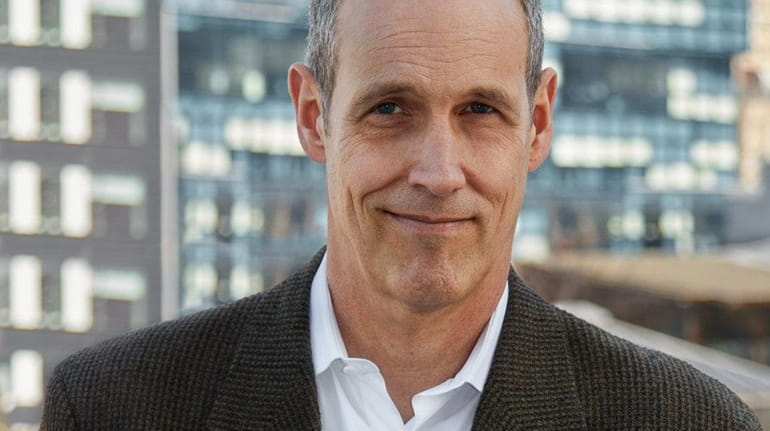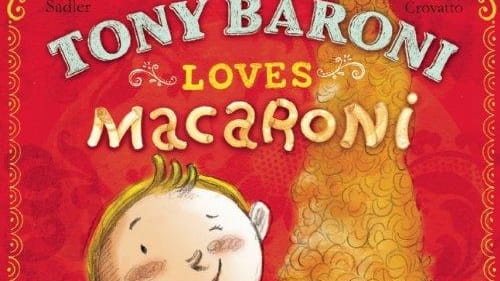Q&A: Bruce Handy discusses ‘Wild Things,’ his book on children’s literature and adult readers

Bruce Handy looks at kids books and the people who write them in "Wild Things." Credit: Denise Bosco
In the delightful “Wild Things: The Joy of Reading Children’s Literature as an Adult” (Simon & Schuster, 307 pp., $26), Vanity Fair contributing editor Bruce Handy assesses some genre classics with a journalist’s flair and a parent’s warmth. Ranging from “Goodnight Moon” to “Charlotte’s Web,” Handy cogently captures each book’s artistic and emotional qualities while deftly placing it in cultural and historical context. He admits being reduced to tears while reading aloud the final “Christopher Robin was going away” chapter of “The House at Pooh Corner,” but jokes that “my heartless kids couldn’t have cared less.” Asides like this recall Handy’s apprenticeship as a writer for Spy magazine and “Saturday Night Live,” but a recent conversation (edited for length and clarity) showed that he is fundamentally serious about children’s literature.
This book grew out of an essay you wrote for The New York Times Book Review about reading “Where the Wild Things Are” to your son, correct?
Yes, and three days after the official publication date we’re driving him out to Oberlin in Ohio to start college! It feels like some kind of cosmic irony, but it’s more that it took me a lot longer to write the book than was initially planned — by my publisher, anyway. I did the whole thing while I was holding down my day job, and I was afraid it would feel like a millstone, but it was really a pleasure throughout.
It’s organized in an interesting way, starting with picture books and moving through books for increasingly older readers.
I knew the focus of each chapter I wanted to write, whether it was a genre like animal books or focusing on a specific author like Maurice Sendak or Beverly Cleary, and I knew I wanted to end with a chapter dealing with kids’ books on death that would focus on “Charlotte’s Web.” At some point I began to realize that there was an age gradation and some kind of increasing consciousness about the world.
You’re starting out with “Goodnight Moon” and some of those other books that are so elemental: looking at a room and what it means to be a room, or Eric Carle with “The Very Hungry Caterpillar,” teaching you about the days of the week and numbers. Then you get into books with more complex ideas about family and society. I think the thing that clinched the organization for me was reading the so-called “girls’ books,” “Little Women” and the Little House series, and realizing that they all deal with maturity and growing into adulthood — very different from children’s literature aimed at boys.
You sketch biographies of the authors of all the books you cover at length: any particular reason?
It was part of the plan from the beginning. I wanted to get a sense of who these people were and what the books meant to them, because I think for all these writers these books were really personal. In different ways and on different levels, they were books these authors felt they needed to write, which is true of all great adult literature as well. I was very fortunate, because there is at least one great biography of pretty much all of the people I ended up writing about, and I certainly relied on those. I also read a lot of academic literature, which is very important, but a lot of that stuff is awfully heavy. I was hoping that I could bring an enthusiasm and a passion to the subject, so that reading this makes you want to go back and reread these books, or pick up the ones you haven’t read, and share them with your children.
What’s next for you? A children’s book?
No, I’m working on a social and pop cultural history of the 1980s, looking at how ideas about money, wealth, and greed evolved during the decade as it was reflected in — and to some extent pushed along by — pop culture. I’m ultimately hoping to shed some light on why we have the issues of inequality that we have now. Obviously, there’s a big political and economic component to that issue, but those parts of the story have been told and analyzed a lot. I think there’s a cultural component to it, so that’s what I’m going to focus on.
You got a bird’s-eye view of that evolution at Spy magazine.
Well, maybe if this first book was partly an investigation or rethinking of my childhood, this one will be a reinvestigation of my young adulthood.

